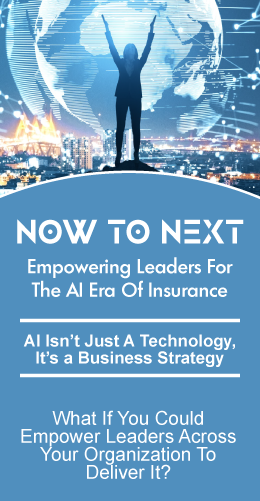
The insurance industry is finally making waves in the area of digital underwriting. It’s refreshing to see some carriers step out of their comfort zones and go beyond just automating basic activities with rules engines and more advanced workflow tools. Most carriers are starting to use additional external third-party data to help support the automation process as well, reducing the operational costs of onboarding a new customer and creating a better customer experience. While it seemed to take forever for many carriers to utilize some of the basic third-party data elements, such as Medical Information Bureau or motor vehicle records, or even credit or reinsurance scores, this is finally becoming the norm.
There is much more to come, though, in the advancement of digital or automated underwriting. Some carriers and startups are just beginning to scratch the surface of how data elements and advanced tools can support the underwriting process and help the industry.
There is so much more data available today to support the underwriting of the entire insurance industry: life, health, wealth, auto, home, commercial, business, and more. Wearables (e.g., Fitbit, Apple Watch, and Garmin) and connected health devices such as blood sugar monitors, toothbrushes, and blood pressure monitors help carriers better understand a person’s health. Drones, satellite images, weather data, and connected home and business devices such as water leak, fire, or CO2 detectors better assess the risk of a home or business. Telematics devices that are built into vehicles or mobile apps track a person’s driving patterns and behaviors to help carriers better assess a driver’s risk. All of these are available today and can provide great value to the digital underwriting process, but many are not being used, or their abilities are not being leveraged well enough to provide extreme benefits to the carrier or the customer.
Now let’s add on the advancement of robotic process automation, artificial intelligence, machine learning, and cognitive computing. The insurance industry has a recipe for next-generation digital underwriting: using a combination of human expertise and technology to reduce human error, improve risk, create consistency, and reach the ultimate customer experience without any of the major downfalls.
The Silicon Valley Insurance Accelerator (SVIA) will host its annual InsurTech FUSION Summit: Rise of a Digital Insurance Industry on June 18 and 19, 2019, in San Francisco. The session Next-Gen Digital Underwriting will be a featured topic of conversation with many new data elements and technologies being discussed. Don’t miss the opportunity to learn how to take the next step in your digital underwriting journey.
Register now at www.insurtechfusion.com and get 15% off of your registration using the code SAMANTHAC15. Aite Group and SVIA look forward to seeing you there and helping you take the next step in your digital transformation journey.














